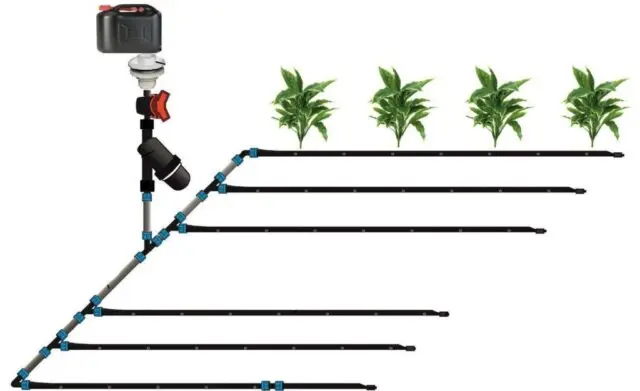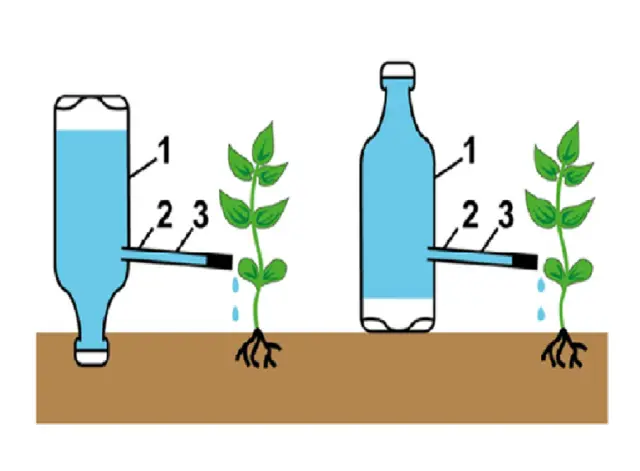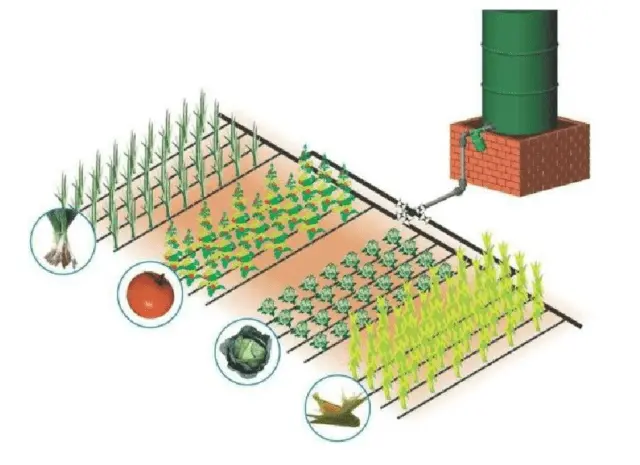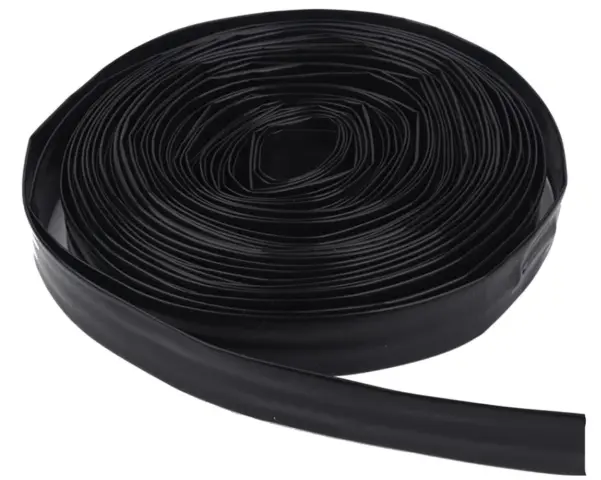Contents
Drip irrigation of potatoes is an effective and economical method that has many advantages. Moisturizing the culture is required several times in the moderately rainy season, and in drought and heat twice a week. Drip irrigation fully satisfies the potato’s need for water.
Potato Drip Irrigation Technology
Drip irrigation of potatoes in the garden involves the supply of water directly to the root zone. Moisture comes in small portions. Their regulation is provided by special dispensers-droppers (emitters). At the same time, water enters the potato roots practically without loss, when, with other irrigation options, it actively evaporates and enters the deep layers of the soil.
Drip irrigation is suitable for growing crops both in open and protected ground. It allows you to adjust the time and intensity of water supply. The drip irrigation system can be tape or tubular, depending on the method of supplying the liquid, and includes:
- water tank (intake unit);
- mesh filter;
- distributing pipeline;
- drip lines (hoses or tapes);
- fitting;
- flow regulators, water pressure regulators.

You can buy a drip irrigation system ready-made or make it yourself
Pros and cons of drip irrigation for potatoes
Drip irrigation attracts with minimal water loss – only 5%, when for conventional moisturizing methods this figure is ten times higher. The method has other advantages:
- the flow of moisture directly to the roots of the culture;
- uniform irrigation of plantings even on slopes;
- optimal water temperature for irrigation (heated in the tank), therefore there is no shock drop;
- the possibility of combining with top dressing with minerals that dissolve in water (fertilizer consumption is reduced);
- universality – the method is suitable for both open and protected ground;
- the absence of shocks for plants from waterlogging to drying out;
- slowing down the growth of weeds due to the minimal ingress of water and nutrients into the aisles;
- lack of a continuous crust, maintaining soil friability, unhindered access of oxygen to the roots;
- reduction of time costs and labor for irrigation;
- increase in productivity;
- reducing the risk of sunburn;
- the ability to automate irrigation (need to install a controller).
Drip irrigation of potatoes also has disadvantages:
- purchase costs;
- short service life (on average two years);
- droppers periodically clog;
- risk of damage to pipes (tapes) by domestic animals, rodents;
- the need to dismantle for the winter.

The problem of clogging the drip irrigation system is partially solved by installing a filter, but it needs periodic cleaning
Do-it-yourself drip irrigation of potatoes
Drip irrigation systems for potatoes and other crops can be purchased. There are ready-made kits and individual components for sale. Another option is to do everything yourself. Sometimes improvised materials are enough for this.
Of plastic bottles
A simple option is to organize drip irrigation for potatoes using bottles. In addition to them, tubes of small diameter are needed. A part of a medical dropper or an empty rod from a pen will do (the contents can be removed with acetone or gasoline). The manufacturing algorithm is simple:
- Cut the rod or tube so that the length is no more than 10 cm.
- Close one end with a plug or solder with a lighter.
- At 5 mm from the blind end, pierce the tube with a needle.
- Pierce the bottle with an awl 2-2,5 cm from the bottom.
- Insert the tube into the bottle with the open end, secure if necessary.
Bottles are placed next to the bushes so that water from the tube drips next to the stem and moistens the roots. The containers need to be replenished regularly, screwing the lid each time to prevent evaporation.
Bottles for drip irrigation of potatoes can be installed with the neck down. Then they are added dropwise to the shoulders, and the bottom is cut off. It is not thrown away, but used as a lid so that the water from the container does not evaporate. A hole in an inverted bottle is made 1 cm above the shoulders.
Drip irrigation of potatoes from bottles requires regular replenishment of containers with water. This is the main drawback of the system. Because of it, it is convenient in small areas, but its maintenance is laborious in large areas. It is necessary to adapt to it – to determine the required frequency of replenishment of containers.

When using bottles for watering potatoes in the open field, it is important to install them securely
PVC pipes
Drip irrigation of potatoes from PVC pipes is more difficult to organize and install than using bottles, but it is easier to use. You will need the following accessories:
- PVC pipe, diameter ¾”, length across the width of the garden;
- PVC pipe, diameter ½ “- the total length is calculated by multiplying the length of the beds by the number of row spacings;
- plastic container with a capacity of 200 liters;
- fitting, external thread ¾ “;
- valve, female thread ¾ “;
- jacket;
- adapter for PVC pipes;
- mesh filter;
- 1 plug ¾”;
- plugs ½ “- the number is equal to the number of beds;
- tees without thread – the number is calculated according to the number of beds;
- self-tapping screws of different diameters.
To create pressure, a container of water for irrigation is placed on an elevation (at least 1 m above the ground). It can be made from bricks or boards. Further installation is as follows:
- Insert a fitting 10 cm from the bottom of the container.
- Connect the faucet with adapter and filter. To seal the joints, use FUM tape or tow.
- Connect the larger diameter PVC pipe to the adapter.
- Cut pipes of smaller diameter according to the length of the beds.
- Close blanks on one side with plugs.
- Make holes in each pipe, the optimal diameter is 1/8 ″, the step is corresponding to the interval between the bushes.
- Insert self-tapping screws into the holes so that the rods of the maximum diameter are at the plug.
- Lay a pipe of a larger diameter from the end of the beds, forming a right angle to them. This is the main line.
- Cut it in the aisles and connect with tees.
- In the aisles, place pipe sections of smaller diameter, connecting through a tee to the main line. Parts with plugs should be at the ends of the beds.
- Treat all joints for tightness with mastic, be sure to let it dry completely.
- Connect the system to the water supply.
After installing drip irrigation, you need to adjust the size of the holes. This is necessary because as you move away from the main line, the pressure in the pipes decreases.
Sand and other mechanical particles will accumulate at the bottom of the irrigation tank. The tank needs to be cleaned regularly. It is recommended to do it at least once a week.

The drip irrigation system for potatoes made of PVC pipes is durable, but in winter they can crack, so dismantling is required in the fall
With special tapes
These tapes are available for purchase. They are made of polyethylene, inside there are droppers, which are located with a certain step (usually 10-30 cm). Water from them is released under pressure, its consumption is measured in liters per hour.
Tapes for drip irrigation are slotted and emitter. The last ones are considered the best. They have flat droppers that are built in along the entire length with the same pitch. The pressure of the jet is adjustable, and a special device provides self-cleaning from various impurities.
Usually uncompensated emitter tapes are cheaper. In a compensated system, the water flow depends less on the length of the line and the slope of the site.
Slotted drip tape is called because of the shape of the holes that are made by the laser. Inside is a flexible labyrinth that slows down the speed of water, so the irrigation is uniform. The main drawback of the design is the clogging of narrow slots. To keep the water clean, you need to install a filter.
Installation is identical to the option with PVC pipes, only tapes are launched along the aisles. For the winter, they should also be removed for safety until next season.

Tapes for drip irrigation of potatoes attract with uniform irrigation, ease of installation and dismantling for the winter
Which is better to choose
Drip irrigation of bottled potatoes is appropriate to organize in small areas or in a small greenhouse, since water needs to be added regularly. This method also attracts by the absence of costs – improvised materials are used.
In other cases, it is better to choose PVC pipes or tapes. In terms of installation, the latter option is more attractive, since part of the system is already ready, it only needs to be connected. The main advantages of the construction with PVC pipes over tapes are strength and durability.
Potato planting scheme for drip irrigation
When planting potatoes for drip irrigation, the interval between the bushes is made standard, focusing on the characteristics of the variety. To save pipes or tapes, double beds are effective – the structure will pass through their center. Rows are arranged in 30-40 cm increments. Potato bushes are planted in a checkerboard pattern. The optimal row spacing is 0,9-1,2 m.
Conclusion
Drip irrigation of potatoes provides a lot of benefits for the culture itself and for humans. The consumption of water and time is reduced, moisture goes directly to the roots, irrigation can be combined with top dressing. Drip irrigation is organized with their own hands from plastic bottles, PVC pipes or special tapes.










